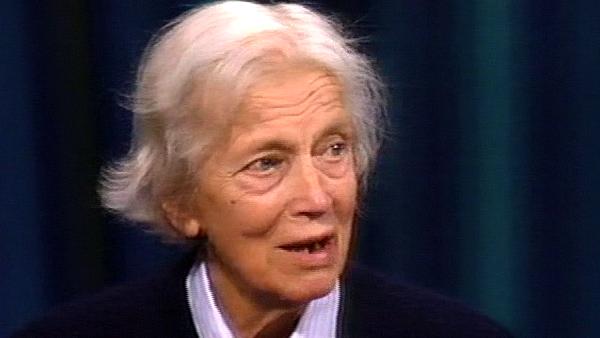NEXT STORY

Calculating three-dimensional electron density maps
RELATED STORIES

NEXT STORY

Calculating three-dimensional electron density maps
RELATED STORIES



|
Views | Duration | |
|---|---|---|---|
| 31. Meeting Lester Smith | 212 | 01:20 | |
| 32. Working on vitamin B12 | 1 | 247 | 03:09 |
| 33. Mapping the chemical structure of B12 | 167 | 00:53 | |
| 34. Calculating three-dimensional electron density maps | 103 | 07:36 | |
| 35. Complex chemistry | 94 | 04:43 | |
| 36. The phase problem | 217 | 02:12 | |
| 37. Insulin and heavy atoms | 1 | 108 | 01:46 |
| 38. The Bijvoet effect | 91 | 01:50 | |
| 39. The structure of insulin | 678 | 04:28 | |
| 40. Synthesising insulin | 165 | 03:13 |


Those first maps were quick to get, because we used the punch card machine, and we got Comrie's best assistant, Betty Gissen, who was working in some statistics lab, in on calculating the map for us. First, was the Patterson, and that gave us the heavy atom co-ordinates, of course, and quite a lot else.
[Q] Yes.
And then, once you had the cobalt co-ordinates, you could calculate the phases from the cobalt positions alone, and those were the maps we spent most time trying to understand, because they were partly right and partly wrong.
British pioneer of X-ray crystallography, Dorothy Hodgkin (1910-1994), is best known for her ground-breaking discovery of the structures of penicillin, insulin and vitamin B12. At age 18, she started studying chemistry at Somerville College, Oxford, then one of the University of Oxford colleges for women only. She also studied at the University of Cambridge under John Desmond Bernal, where she became aware of the potential of X-ray crystallography to determine the structure of proteins. Together with Sydney Brenner, Jack Dunitz, Leslie Orgel, and Beryl Oughton, she was one of the first people in April 1953 to see the model of the structure of DNA, constructed by Francis Crick and James Watson. She was awarded the 1964 Nobel Prize in Chemistry and is also known for her peace work with organisations such as Science for Peace and the Medical Aid Committee for Vietnam. All recorded material copyright of The Biochemical Society.
Title: Mapping the chemical structure of B12
Listeners: Guy Dodson
Guy Dodson studied chemistry and physical science at the University of New Zealand, followed by a PhD on the crystallographic study of an alkaloid. In 1961, he came to Oxford to work on the crystal structure of insulin. In the mid 1970s Guy and his wife moved to York University to establish a laboratory. In addition to insulin studies the laboratory has investigated many complex molecules of medical significance, including haemoglobin, myoglobin, HIV related proteins, proteases and proteins involved in managing nucleic acids in cells. In 1993, he went to the NIMR in London to establish a crystallographic group in an environment that spanned molecular, physiological and disease-related disciplines. Here his research began on some cell signalling proteins. His interests on medically relevant proteins included prions, malarial and TB proteins, and some clinically relevant thrombin inhibitors. Guy Dodson retired in 2004 but is still finding much to do in York and the NIMR.
Tags: B12, heavy atom co-ordinates, cobalt
Duration: 53 seconds
Date story recorded: 1990
Date story went live: 02 June 2008